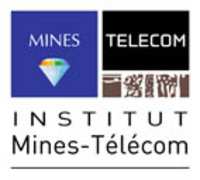Invited Speakers
Elisabeth Oswald

Biography
Elisabeth Oswald received her Msc and PhD from Graz University of Technology.
Her research interest is mainly in information leakage attacks and most of her
publications are within the area of power analysis. Lately she has been
a keen promotor of research into foundations of side channel attacks: i.e.
techniques which unterpin a wide variety of attack methods. For her research
in this area and vision for future development she was awarded a Leadership
Fellowship from the UK government (EPSRC). She now spearheads the side channel
group within Bristol University and focuses mainly on research and postgraduate
supervision.
Talk: Do we need a theory for side channel attacks?
Research in side channel attacks has come a long way from the early publications
around the year 2000. Back then the hallmark of a high quality paper was to provide
some concrete results, i.e. any good paper would show results of actual measurements
and analysis. However, it became clear soon that the result of a single successful (or unsuccessful)
attack is often insufficient evidence, we rather need metrics or even
a theory to make any meaningful statements about attacks and countermeasures.
In this talk I would like to look into what kinds of theory we currently have, including
an honest assessment of what theory can and cannot do for us. As part of my talk I
intend to cover known grounds such as proofs around masking (and their limitations),
recent separability results on profiled vs. non-profiled distinguishers, and
touch on leakage detection strategies.
Gilles Van Assche

Biography
Gilles Van Assche currently works in the Secure Microcontrollers Division
of STMicroelectronics in Diegem, Belgium and teaches cryptography at the
École Supérieure d'Informatique in Brussels. He received the Physics
Engineer degree from the Université Libre de Bruxelles (ULB) in 1998. He
then joined the company Proton World, which later became part of
STMicroelectronics. Between 2000 and 2005, in parallel with his job, he
worked on a PhD thesis at the Center for Quantum Information and
Communication of the ULB. He is a co-recipient of the prize Le Prix La
Recherche mention Mobilités 2004 for his work in quantum cryptography. He
is the author of the book "Quantum Cryptography and Secret-Key
Distillation" (Cambridge University Press) and of about 30 scientific
papers, and has served in the program committee of various conferences.
His current research interests are hash function design, modes of
operation and side channel attacks. Together with Guido Bertoni, Joan
Daemen and Michaël Peeters, he is a co-designer of the Keccak sponge
function, which was selected by NIST as the winner of the SHA-3
competition. At ST, he works on security and testing aspects of software
on secure microcontrollers.
Talk: Implementation aspects of KECCAK
In October 2012, the American National Institute of Standards and
Technology (NIST) announced the selection of Keccak as the winner of the
SHA-3 Cryptographic Hash Algorithm Competition. This concluded an open
competition that was remarkable both for its magnitude and the involvement
of the cryptographic community.
Keccak relies on a new construction, called the sponge construction, which
allows for simple and flexible modes of use, not only for all the flavors
of hashing, but also for keyed modes such as stream encryption,
authentication, and authenticated encryption. Internally, the Keccak-f
permutation uses bitwise operations and its round function has algebraic
degree two, which makes it suitable for protection against side-channel
attacks.
In this talk, I will introduce Keccak and give an overview of its
implementation properties. In particular, I will focus on aspects relevant
to low-resource devices and on resistance and countermeasures against side
channel attacks.
















